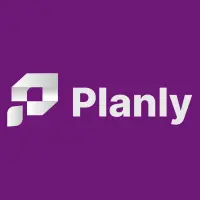Social media is a huge industry. With shiny numbers that resemble hockey sticks and glamarous socail media advice posts, sometimes it is hard to find your place.
But there is one thing that everyone agrees on and that is the importance of social media calendars.
If you are in social media game, you need it like a fish needs water.
So, let's begin with the basics.
What is a Social Media Calendar?
A Social Media Calendar is a tool that helps you plan, organize, and schedule your posts across various platforms in advance.
With a Social Media Calendar, you can strategically plan out your content, create consistency in posting, and maintain a cohesive brand presence online. Doesn't matter if you are small business owner, a content creator, a social media manager, or you are extremely passionate about your $20,000 Pokemon card collection, having a well-thought-out calendar can make a world of difference in your digital marketing efforts.
So, why should you bother with a Social Media Calendar, you ask? Well, let me tell you about the benefits.
Benefits of Using a Social Media Calendar
When you indulge in social media, many times you find yourself stressing out about what to post and when to post it? A social media calendar's job is to take care of these things.
Here are 5 main benefits of using a social media calendar:
- Increases consistency
- Saves time
- Improves organization
- Allows strategic planning
- Helps analyze and get better
Consistency
One of the biggest benefits of using a social media calendar is that it allows you to maintain a consistent posting schedule. Consistency is key when it comes to building an engaged audience and keeping them interested in your content.
Time
Another great advantage of using a social media calendar is that it saves you time. Instead of racking your brain every day trying to come up with content ideas, you can sit down once a week or once a month to plan out your posts. This not only frees up your time to focus on other aspects of your business but also allows you to create more thoughtful and strategic content.
Organization
Keeping track of all your social media posts is overwhelming, especially if you are active on multiple platforms. A social media calendar helps you stay organized by giving you a clear overview of what you have posted, what you plan to post, and when you plan to post it. Plus, you can print it and use a marker to see what you have posted and what remains.
Strategy
With a social media calendar, you can plan your content in advance based on your marketing goals and objectives. This allows you to align your social media efforts with your overall business strategy and ensure that your posts are working towards achieving specific outcomes.
Reflection and Growth
By planning out your social media content in advance, you can also take the time to reflect on what is working and what isn't. You can analyze the performance of your posts, track engagement metrics, and make adjustments to your strategy as needed. This is much needed, especially if you are working in an agency.
Adapting Content Calendar to Different Social Media Platforms
Now you know all about the benefits of this content. But there is more to it.
You can't stop by creating a one social media calendar for your agency and stop with it.
The next step is choosing the right social media and content calendar combination.
Research the unique characteristics, audiences, and content formats and try to understand each social media network to see what works and what does not.
You don't need to feel like the same person in different social media platforms, but people should be able to notice the similarities. Ensure a cohesive brand voice and message across all platforms while adapting content to align with the specific platform's style and audience.
Also consider finding the optimal posting times and frequency for each platform.
Content Calendar Creation Tips for Major Social Media Platforms
1. Facebook:
- Audience Engagement: Focus on creating engaging posts with images, videos, and interactive content like polls and quizzes.
- Optimal Times: Post when your audience is most active, typically mid-morning to early afternoon.
- Frequency: 1-2 posts per day is effective without overwhelming your audience.
2. Instagram:
- Visual Storytelling: Use high-quality images, videos, and stories to engage followers. Leverage Instagram Reels for short, engaging videos.
- Consistency: Maintain a consistent aesthetic and use relevant keywords and hashtags and to increase discoverability.
- Frequency: Aim for 1-2 posts per day and make use of Instagram Stories throughout the day to stay visible.
3. Twitter:
- Concise and Timely: Post short, concise updates and engage with trending topics and hashtags.
- Interaction: Engage with followers through retweets, replies, and Twitter polls.
- Frequency: Multiple posts per day (3-7) are beneficial due to the fast-paced nature of Twitter.
4. LinkedIn:
- Professional Content: Share industry news, thought leadership articles, and company updates.
- Networking: Engage with your network through comments and by sharing others' content.
- Frequency: 1 post per day during weekdays is optimal for professional engagement.
5. Pinterest:
- Visual Appeal: Create eye-catching pins that link back to your content. Use high-quality images and infographics.
- Categories: Organize your pins into relevant boards for better discoverability.
- Frequency: Aim for 5-10 pins per day, including repins, to keep your boards active.
6. TikTok:
- Creative Content: Produce short, engaging videos that align with trending challenges or use popular sounds.
- Authenticity: Be authentic and relatable to connect with the audience.
- Frequency: 1-3 posts per day to stay relevant and maximize engagement.
One thing you shouldn't forget at all is content repurposing.
And you should be good to go.
Where does the Content Calendar Fit in the Social Media Strategy
So, you've created your social media content calendar for your different customers and customized it to each social media platform. Now it's time to see how it fits into your social media strategy
Generally, you don't need to worry about finding a place for your content calendar.
If you have a social media strategy, you already have a socia media calendar.
But in some cases, you do not. Here are some of them, and how you can add the content calendar to make things easier.
You just did it
Well, it might be that things just started and you focused on other things and neglected socail media consistency. Now you have managed to turn down the knob and it is time to focus on adjusting and optimizing.
But you don't know where to start.
Content calendar is the first step. Take your time, analyze previous social media posts and see how you can improve.
Then, sit down, write your content and fit it into the social media calendar.
Your team needs some fresh air
Every team has ups and downs. It is important to be dedicated when managing crisis, but it is equally important to be vigilant to mitigate the risks.
Once you are out of the "busy season", set up some time with your team, delegate tasks and create the social media calendar for agency.
Hard times are ahead of you
Sometimes you just feel it. Something bad is going to happen. At these times, you know for sure you will not be able to focus on consistency or other things.
So, before that starts, take your time, sometimes a bit extra to tidy up the social media calendar and build a stockpile.
Analyzing and Adjusting Your Social Media Calendar
So, you've created a killer agency social media calendar, scheduled your posts, and hit the publish button. But your work doesn't stop there! To truly make the most out of your social media efforts, you need to regularly analyze your performance and make adjustments to improve your strategy. Let's dive into how you can effectively analyze and adjust your social media calendar for optimal results.
1. Track Your Metrics
The first step in analyzing your social media calendar as an agency is to track your metrics. Look at key performance indicators such as engagement rate, reach, click-through rate, and conversions. Use social media analytics tools provided by platforms like Facebook Insights, Twitter Analytics, or Instagram Insights to gain valuable insights into how your posts are performing.
2. Identify Top-Performing Content
Take a closer look at your top-performing content. What types of posts are resonating with your audience? Is it videos, images, or blog posts? By identifying patterns in your successful content, you can tailor your future posts to better meet the preferences of your audience.
3. Evaluate Posting Times
Consider the timing of your posts. Are there specific days and times when your audience is most active? Use your analytics to identify peak engagement times and adjust your posting schedule accordingly. Experiment with different posting times to see which ones yield the best results.With the right social media scheduling tool, you can effortlessly organize your content calendar and ensure that your posts are published at the optimal times.
4. Monitor Your Competitors
Keep an eye on what your competitors are doing on social media. Analyze their content strategy, posting frequency, and engagement levels. By understanding what works for your competitors, you can gain inspiration for agency social media calendar and stay ahead of the game.
5. Stay Flexible and Adapt
Social media is constantly evolving, so it's essential to stay flexible and adapt to changes. Keep an eye on emerging trends, new features on social media platforms, and shifts in your audience's behavior. Don't be afraid to pivot your strategy if needed to stay relevant and engaging.
6. A/B Testing
Experiment with A/B testing to see what resonates the most with your audience. Test different types of content, posting times, captions, and visuals to see which variations perform better. Use the results to refine social media calendar for agencies and improve your overall strategy.
Remember, analyzing and adjusting your social media calendar is an ongoing process. Keep a close eye on your metrics, stay informed about industry trends, and be willing to make changes to optimize your performance.



